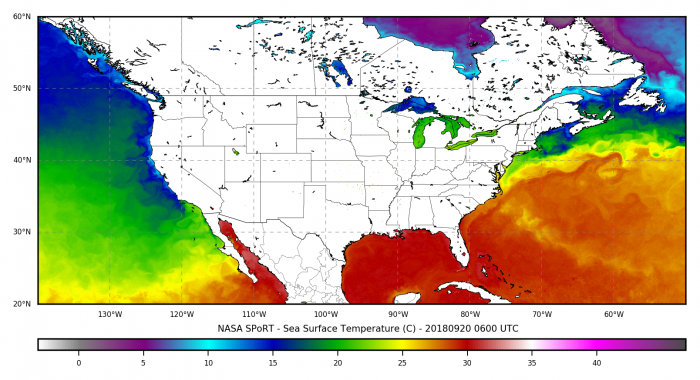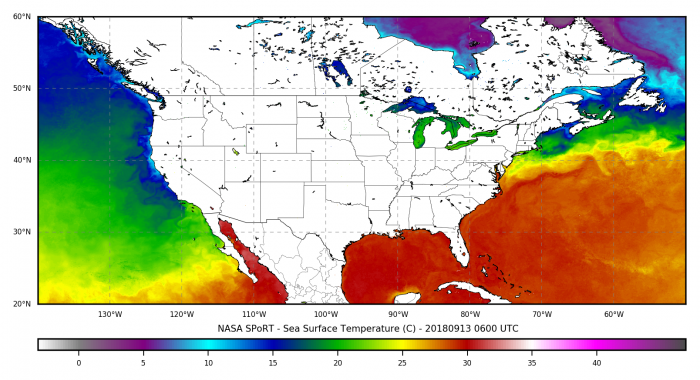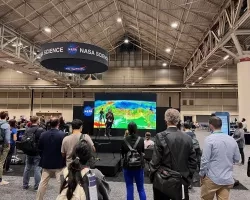UPDATE 9/21/18:
View the latest SPoRT SST image: https://weather.msfc.nasa.gov/cgi-bin/sportPublishData.pl?dataset=sst
UPDATE 9/14/18:
SST data derived from satellite sensors are critical in many aspects of weather prediction and regional diagnostic studies. The satellite estimates provide SST values with comparable accuracy to buoy data but with much greater spatial coverage. As with many aspects of remove sensing of geophysical parameters, trade-offs between spatial resolution, temporal sampling, and data density compromise products and their use. Most SST estimates are derived from multichannel retrieval algorithms applied to infrared data. These approaches provide resolutions down to 1 km on a global and regional basis in the absence of clouds. Microwave estimates of SST are unaffected by non-precipitating clouds and provide a more "all weather" estimate, but suffer in spatial resolution and land contamination. Various techniques are employed to circumvent these limitations. For example, optimal interpolation techniques are applied to global AVHRR and buoy data to produce a course-resolution daily global SST product referred to at the Real-Time Gridded (RTG) analysis (Thiébaux et al. 2003). While this data set is esthetically pleasing and has global weather forecast applications, it's relatively course resolution prohibits its application to mesoscale studies on the regional scale. To address regional forecast problems by providing high resolution cloud-free SST estimates, a number of daily and multi-temporal composite SST products have been developed from both geostationary (NESDIS GOES-POES SST, e.g. Maturi et al, 2010) and polar orbiting infrared (OSTIA SST, e.g. Stark et al 2007; SPoRT MODIS-only SST, e.g. Haines et al 2007) and infrared and microwave data (SPoRT Enhanced SST, Jedlovec et al. 2010).





